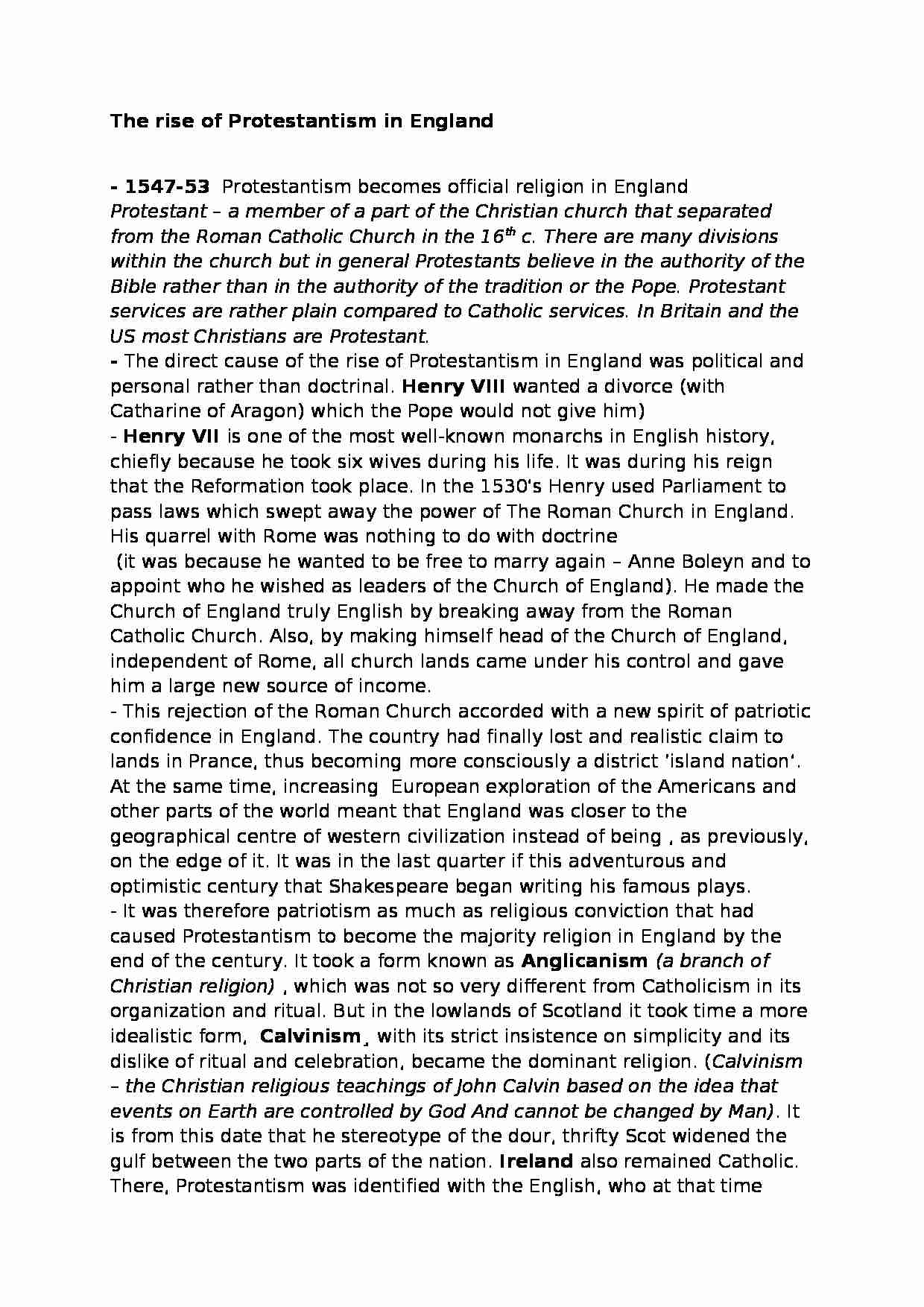To tylko jedna z 2 stron tej notatki. Zaloguj się aby zobaczyć ten dokument.
Zobacz
całą notatkę


The rise of Protestantism in England
- 1547-53 Protestantism becomes official religion in England Protestant - a member of a part of the Christian church that separated from the Roman Catholic Church in the 16th c. There are many divisions within the church but in general Protestants believe in the authority of the Bible rather than in the authority of the tradition or the Pope. Protestant services are rather plain compared to Catholic services. In Britain and the US most Christians are Protestant. - The direct cause of the rise of Protestantism in England was political and personal rather than doctrinal. Henry VIII wanted a divorce (with Catharine of Aragon) which the Pope would not give him) - Henry VII is one of the most well-known monarchs in English history, chiefly because he took six wives during his life. It was during his reign that the Reformation took place. In the 1530's Henry used Parliament to pass laws which swept away the power of The Roman Church in England. His quarrel with Rome was nothing to do with doctrine (it was because he wanted to be free to marry again - Anne Boleyn and to appoint who he wished as leaders of the Church of England). He made the Church of England truly English by breaking away from the Roman Catholic Church. Also, by making himself head of the Church of England, independent of Rome, all church lands came under his control and gave him a large new source of income. - This rejection of the Roman Church accorded with a new spirit of patriotic confidence in England. The country had finally lost and realistic claim to lands in Prance, thus becoming more consciously a district `island nation'. At the same time, increasing European exploration of the Americans and other parts of the world meant that England was closer to the geographical centre of western civilization instead of being , as previously, on the edge of it. It was in the last quarter if this adventurous and optimistic century that Shakespeare began writing his famous plays. - It was therefore patriotism as much as religious conviction that had caused Protestantism to become the majority religion in England by the end of the century. It took a form known as Anglicanism (a branch of Christian religion) , which was not so very different from Catholicism in its organization and ritual. But in the lowlands of Scotland it took time a more idealistic form, Calvinism¸ with its strict insistence on simplicity and its dislike of ritual and celebration, became the dominant religion. (Calvinism - the Christian religious teachings of John Calvin based on the idea that events on Earth are controlled by God And cannot be changed by Man). It is from this date that he stereotype of the dour, thrifty Scot widened the gulf between the two parts of the nation. Ireland also remained Catholic. There, Protestantism was identified with the English, who at that time were making further attempts to control the whole of the country. Elizabeth I Another key figure of that period was Elizabeth I, daughter of Henry VIII. She was the first of three long-reigning queens in British history (the other two are Queen Victoria and Elizabeth II). She defeated the powerful navy of Spain, the greatest European power of the time. During her long reign she established, by skilful diplomacy,
... zobacz całą notatkę




Komentarze użytkowników (0)